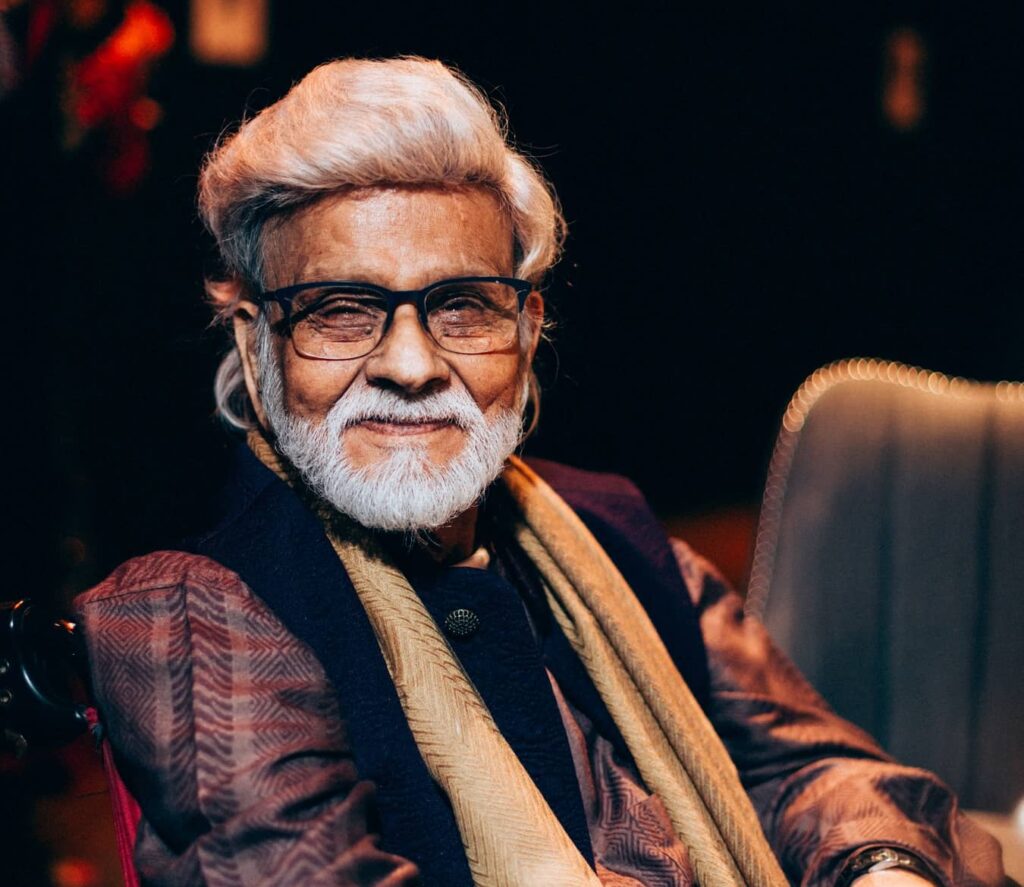Celebrated artist and sculptor Satish Gujral was born in Jhelum in the undivided Punjab state now a part of Pakistan on 25 December 1925. A penchant for the fine arts that he developed pretty early in life saw him pursue his education at the Mayo College of Arts, Lahore and thereafter at the prestigious Sir J J School of Arts in Bombay (now Mumbai). But he got an opportunity to hone his talent further after he landed a scholarship that enabled him to study at the Palacio de Bellas Artes in Mexico City. Apart from painting, the young Gujral also took a keen interest in mastering the nuances of other disciplines like sculpture, architecture, ceramics etc., and to his credit achieved great proficiency in all of them.
A Punjab migrant who preferred to cast his lot with India, Satish Gujral was based in Delhi for most of his life. He first attracted the attention of connoisseurs of art with his ‘Partition Series’ which was based on the painful Partition riots that left a deep and abiding impact on his life. The agony of the riots was etched vividly on canvas and left an indelible imprint on all those who viewed the series. The painter was at his peak between the years 1952 to 1974 when he was invited to display his oeuvres at prestigious galleries across the world including inter alia New York, Montreal, Berlin and Tokyo apart from Delhi and Bombay where his paintings were featured in all major retrospectives and biennales. His paintings like ‘ Days of Glory’ and ‘Mourning en mass’ provided a distinct fillip to his career. The reputed painter also had an abiding interest in collages and murals and he excelled in both these areas as well.
Gujral won his spurs as an architect as well and many of his creations have won acclaim. Significant among the buildings that bore his stamp of class was the Belgian Embassy in Delhi which stood out for its labyrinthine design and structure that spoke volumes for its originality and creativity as well. The construction was selected by the International Forum of Architects as one of the 1000 finest buildings built in the 20th century. The architect was conferred the Order of the Crown by the Belgian government for the stellar work. The other structures that were designed by him included the UNESCO building in New Delhi, Goa University and the Ambedkar memorial that was commissioned by the then UP Chief Minister Mayawati. Satish Gujral’s architect son Mohit Gujral too contributed handsomely to the construction. One of Gujral’s creations that won accolades and was hailed as a high watermark in architectural brilliance was the summer palace of the Saudi Royal Family in Riyadh.
A tragic swimming accident at the age of eight deprived Satish Gujral of his hearing and this resulted in an impermeable silence enveloping the young lad and his disability left a lasting impression on his life and his artistic practices as well. Incidentally Gujral regained his hearing at the age of seventy three after sixty two years in the year 1998. His autobiography aptly titled ‘A Brush with life’ which was published in 1997 was not only a best seller that afforded glimpses of the painter’s eventful life but was also the subject of a documentary. BBC too came out with a documentary titled ‘Partition – The day India burned’ which featured Gujral’s work the ‘Partition series. Satish Gujral earned plenty of laurels from far and near for his all round contribution to the fine arts and the popular news channel, NDTV conferred on him the ‘Indian of the Year’ award in April 2014. Gujral was also the recipient of the Padma Vibhushan awarded by the Government of India, the second highest civilian honour next only to the Bharat Ratna. His elder brother Inder Kumar Gujral served as India’s Prime Minister between the years 1997-98. Satish Gujral passed away in Delhi on the 26 March 2020 at the ripe old age of 94.
In a tribute to the late polymath, Prime Minister Narendra Modi observed, ‘Satish Gujralji was versatile and multifaceted. He was admired for his creativity as well as the determination with which he overcame adversity.’


 [/column]
[/column]